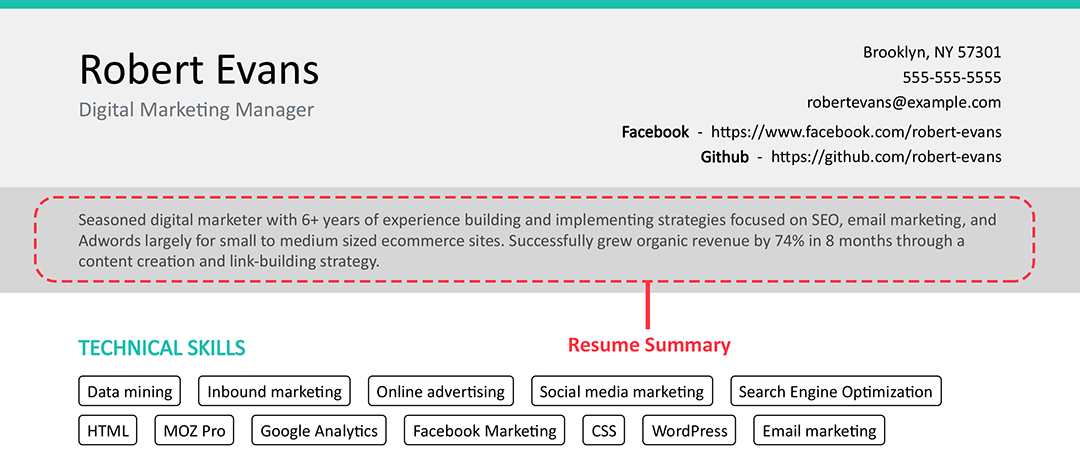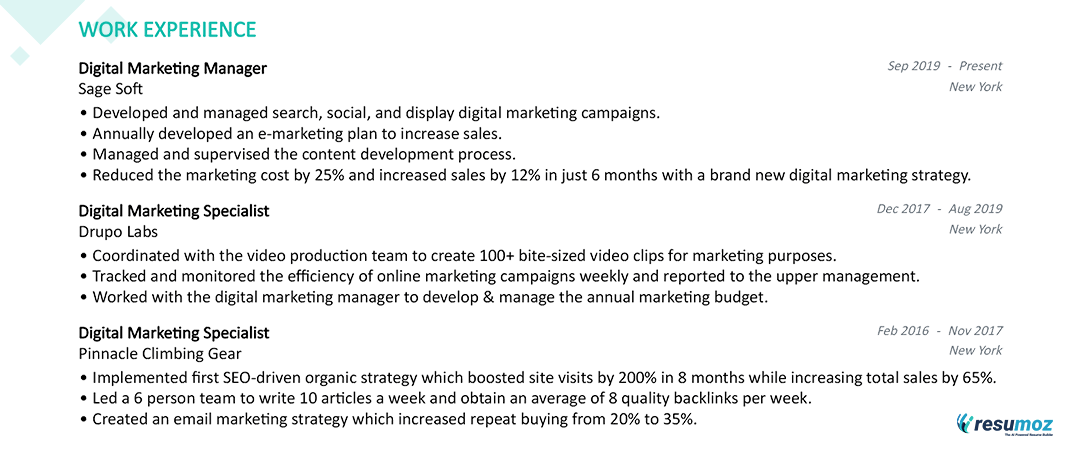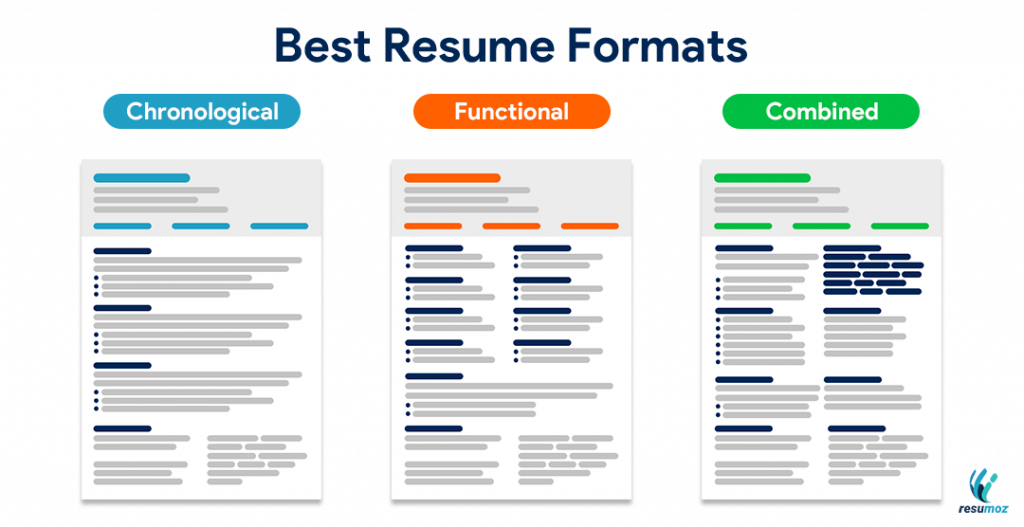Every unemployed person’s only wish is to find a job in a reputable company as soon as possible. But though you apply for many jobs, no one will even invite you to at least for a single interview. Am I correct?
Are you one of the thousands of people who continue to apply for jobs using an old generic resume without knowing any apparent reason for the above problem?
Maybe you’re waiting for weeks or months because you did not get a proper response from the companies that applied for the job. The simple answer for this is that your resume is not up to the required standard.
So you’re probably wondering how to write a resume that will catch the attention of recruiters.
As job seekers, we all make mistakes when it comes to resume writing. We need to attract more than just recruiters. Many companies today use a variety of software to help with the recruitment process. Applicant Tracking Systems, or ATS, are what we call them. So, whenever we create a resume, we must know how to write a resume that beats ATS.
Do you want to know the best resume writing tips to land your dream job? If that’s the case, this article is tailor-made for you.
How to write a resume correctly?
Before creating a resume, you must first decide how you will create your resume. You will fail at the start if you use a simple text editor to create your resume. As a result, we recommend that you use a powerful online resume builder such as Resumoz.
It is completely free, quick, and simple. You will also receive a job-winning and ATS-optimized resume. What else do you require from an online resume builder?
As you got a good online resume builder, that doesn’t say that you won the game. A resume builder simply provides you with a platform to create your resume in proper format. Whatever tool you use to create your resume, general resume writing knowledge is required whenever you write a resume.
So, let’s dive in!
The anatomy – what to include in your resume
A well-written resume includes a few mandatory sections as well as optional sections based on the job you’re applying for. See the table below.
To write a proper resume, you must understand how to write each of these sections correctly. Here’s how to properly craft each resume section, what they should include, and everything else you need to know to have a perfect resume.

Resume header (The contact information section)
One of the most important sections of a resume is the contact information section. Even if you have written the rest of the sections correctly, the recruiter will be unable to contact you if any of the information contained herein is incorrect.
So you have to be extra careful when you list your contact information. Make sure that you have included the correct contact information in your resume header.
There is some information that must be included in a typical resume header. They are as follows:
•
First name / last name
•
Phone number
•
Email address
•
Location
Simply enter your first and last name when adding your name. It should be written in the largest letter size on your resume.
Use only one of your active phone numbers. It should be completely personal to you. Also, your email address should be personal, not the work email address. When creating an email address, keep professionalism in mind. If you don’t already have a professional email address, get one from a reputable email service provider right away.
When writing your address, avoid using the full address. Recruiters are only interested in knowing if you are close to the organization. So just include your city and state of residence.
You can add more information to your resume header in addition to this information. For instance, job title, LinkedIn URL, social media, web/blogs, and so on. These will emphasize your worth even more.
You’re on your way to creating a winning resume. If this is the case, keep in mind that there are some sensitive details that should not be included in your resume header. Let’s take a quick look at them.
•
Date of birth – Your age doesn’t matter to the hiring manager. They do not think about age when they give you a job. But if you present it on the resume, there is a risk that it may lead you to age discrimination. So avoid revealing your age in your resume.
•
Headshot – When reviewing your resume, hiring employers do not expect to see a photograph of you. So avoid inserting your photo in the resume. However, in other countries, such as the United States, it is illegal to include photographs on a resume. Only put it in your resume if the job advertisement specifically requests it.
Let’s take a look at what a perfect resume header looks like.

Read more: Complete Resume Header Guide
Professional Summary (or Objective Statement)
Resume Summary, there is nothing wrong with saying the heart of a resume. This is often the first place that a typical recruiter will look in a resume. So this is an important factor for the first impression of the recruiter.
As you all know, a recruiter usually spends less than 6 seconds inspecting a resume. If you get the attention of the recruiting manager during this short period of time, it will be a great achievement for you.
You can only overcome this six-second challenge with a well-written resume summary or objective statement if you are a recent graduate. Whichever of the two you write, it will be positioned at the top of the resume.
So, it’s very important to know how to write both properly.

What is the difference between a resume summary and an objective statement?
A summary statement is a sentence that is made up of 3-4 sentences which is a synopsis of your career. Unless you are a recent college graduate, a person with less related experience, or a person who is switching careers, you should always use a resume summary.
Same as the resume summary, the objective statement is also written with 3-4 sentences. As this is written by novices the ultimate goal is to show that you are fit for getting into a new field. You may not be available with related experience. But you can mention the skills, education, and certifications relevant to the job. Let the recruiter feel that you can perform the duties and responsibilities well like an expert.
Read more: Complete Guide to Resume Summary
Work Experience
We can not forget the work experience section when talking about a successful resume. Because that is such an important part. As a career expert, I can recommend this section as the best place in the resume to sell yourself.
If you master the art of writing this work experience section correctly, remember that you know more than 75% of how to write a resume perfectly and accurately.

Let’s see exactly how to write this section step-by-step.
•
Job Title – At the top of the work experience section you should mention the title of the position you have previously held. When the recruiters look at your resume, they should understand that you have the relevant job experience. Your job title makes it easy for them to understand your work experience at a glance.
•
Company name and the location – Below your job title you should mention the name of the company you worked for and where it is located. In some cases, if those institutions are less well-known, there is nothing wrong with giving a brief introduction to those institutions in a sentence or two.
•
Dates employed – Here you should mention the time duration you worked in each institution. It doesn’t matter if you don’t remember the exact date and time. Recruiters only need to know approximately how long you have been in each job. However, the standard date format that employers and recruiters expect is mm/yyyy format.
•
Achievements or accomplishments – If you have any achievements related to your job field, describe them under each of those job titles. Many applicants write their resumes outlining their responsibilities. But if you can list your achievements instead, then your resume will be more standout from the crowd.
How much work experience do you need to mention in your resume?
If you have more than a decade of experience, you might think about how much experience should I mention in the resume. But if you put it all together and write your resume, your writing will be a very lengthy one.
On the other hand, if you are new to the job field, you may not have any experience. So you wonder how I can fill this part.
The table below will give you a good idea of how much experience you should mention depending on your experience level.
Read more: Resume Work Experience
Education
The education section is also a mandatory component of a resume. There are a few things to include when writing this education section. Now let’s see exactly how an education section is set up properly.
- Program name – E.g.: “MSc – Global Business Management”
- Institution name – E.g.: “The University of Chicago”
- Years attended – E.g.: “09/2016 – 06/2022”
- GPA (Optional & only if it is above 3.0) – E.g.: “3.80 GPA”
- Coursework (Optional) – E.g.: “Introduction to marketing, Promotional Strategy, Business Ethics, Sales Marketing, etc.”
- Academic Achievements – E.g.: “2019/2020 – Dean’s list, Stanford University”
The following is an example of a well-written piece of resume education.
Education
B.Sc in Software Engineering
Jan 2016 – Mar 2020
New York University
New York
- Prominent coursework:Software Design and Architecture,Software Development Cycle, and Date Structures
- 3.90 GPA
In addition, use the following tips to further enhance your resume education section.
•
Mention your latest educational qualification first and the others in reverse-chronological order.
•
If you do not have the relevant experience, add the education section on the topmost of your resume and below the resume header.
•
Mentioning school qualifications is not essential if you have a university qualification.
•
Reconsider the inclusion of the GPA if it is less than 3.0.
Read more: Complete Resume Education Guide
Skills
The skill section is another important part that should be in a resume. This should include all the technical knowledge or hard skills related to the job you are applying for as well as all the relevant soft skills you have.
What is the difference between hard skills and soft skills?
•
Hard skills are the measurable abilities related to your job field. These may vary depending on the job and the industry.
•
Soft skills are the personal skills that each individual got that will help them do their job well. Communication, leadership, critical thinking, and management skills, etc. are some of them.
However, when you write your resume, try to insert both types of skills which are relevant to the job. The skills section is a great place to tailor your resume to the job. Therefore carefully read the job advert and pick the essential and required skills. Then apply them to your resume effectively.
When listing your technical skills try to insert them with your proficiency level. This could bring your resume to the top of the pile.
Note that, NEVER LIE about your resume skills and skill level. That will never be an advantage for you.
Here is a good example of a skills section.

Read more: How to List your Skills on a Resume
Try these tips for a winning resume
List achievements in bullet points
Mentioning job responsibilities is one of the major resume mistakes you would do in your resume. Therefore try to mention your achievements or accomplishments with 3-4 bullet points under each job. Make sure all of them are relevant to the job you are applying for.
You can start each bullet point with an action verb. Action verbs can better describe what you have done in that particular role. Here are a few examples of action verbs that you can use in your resume.
- Acquired
- Coordinated
- Created
- Launched
- Modified
- Monitored
- Negotiated
- Reported
- Sustained
- Transformed
- Yielded
Make your resume ATS optimized
These days almost all the companies get the assistance of Applicant Tracking Systems to streamline their recruiting process.
In order to have an ATS-optimized resume, you must follow these instructions.
•
Optimize the resume with keywords from the job description.
•
Minimize the inclusion of images, graphics, and charts.
•
Use a universal and compatible resume file type.
•
Do not use fancy resume templates.
•
Stick to simple and concise bullet points.
Read more: How to Beat Applicant Tracking Systems
Tailor your resume to the job
On average, about 70% of job applications do not even reach recruiters. This is because ATS filters the resume. Accordingly, only the resume tailored to the specific job will be filtered. So you need to know exactly how to beat this robot ATS software.
It is not a difficult task. The only secret here is to tailor your resume according to the job advertisement. Read the job advertisement carefully and note down the most critical requirements for the job.
After. Tailor your resume according to those requirements found by you in the necessary places of your resume effectively. The goal of this process is to show that you have the relevant skills and qualifications to successfully do the job.
Avoid grammar and spelling mistakes
Your resume reflects the professional inside yourself. Not only that but also your resume tells the hiring manager how much you love the job, your concern, attention-to-detail, and much more.
If your resume is full of spelling and grammar mistakes, it will be a scar on your professionalism as well as a chance to lose your job opportunity.
Therefore, you have to make the resume exactly as the recruiter expects it to be with excellent grammar and spelling without any errors.
Here are some useful ways that you can reduce mistakes in your resume.
•
Give your resume to a friend to proofread.
•
Try Grammarly and Hemingway editors.
•
Avoid using first-person pronouns.
•
Include the full form of abbreviations (E.g.: Use “Personal Assistant” instead of “PA”.)
•
Get it reviewed by a professional or an online resume builder.
Don’t make a lengthy resume
There is really no standard rule about the length of a resume. What matters is how well the resume is designed to fit the job you are applying for.
However, by creating a single-page resume, you can keep the recruiter’s attention in your resume without losing it. But if you need to add more information, there is no problem going to the second page. But if you have less than 15 years of experience, there is no point in extending your resume even further.
Avoid photographs in resume
In countries like the USA and Australia, it is recommended not to include a photo in the resume. We also endorse it due to a number of reasons. A photograph on a resume could be also a discrimination factor.
Actually, you only need to include a photo on your resume if the recruiter strictly says to include it in the job advertisement. Otherwise, it’s all right to submit your resume with your photo on it.
However, you can add a professional photograph into your LinkedIn profile and add that link to your resume. This is a smart alternative if you want to show your face to the recruiters via your resume.
What is the best resume format
There are three major types of resume formats named reverse chronological, functional, and combination resume formats. You have to be wise enough to pick the right resume template for you depending on the job you are applying for and the level of experience you have.

Let’s get a clear idea of each resume format:
1.
Reverse chronological resume format: If you are a person with plenty of work experience in a specific field or related to the position you are applying for, this will be the ideal resume format for you.
2.
Functional resume format: Also called the skills-based resume. If you haven’t got any related or similar experience because you are a recent graduate, college student, or a person trying to change careers, this would be the perfect resume format to highlight their skills.
3.
Combination resume format: If you are a person available with a diverse set of skills, it is a better choice to use a combination resume format. Via this resume format, you can showcase your most relevant work experience and at the same time, it can highlight your key relevant skills. This is perfect to use when you are applying for a mid-senior level, senior management, or executive-level position.
However, almost over 90% of the candidates used to stick with the reverse chronological resume format. This is the most popular resume format and the resume format preferred by most of the recruiters.
The reverse chronological resume focuses on a candidate’s experience. The most recent work experience listed at the top of the resume and then the others in reverse-chronological order. This helps you to highlight your upward career progression and continuous career history.
How to format a resume
Legibility is an important factor to be considered when you make a resume. So we want to make the resume easy for anyone to read not only the human eye but also the robots.
Here’s how to format a resume with better and clear visibility.
Focus on the font type and size
By choosing a font that is easy to read and simple, you can easily win the first impression of the recruiter. The recruiter usually spends very little time inspecting a resume, so do not let him think negatively about us during this time.
Therefore, make your resume with clear and legible fonts like,
•
Arial
•
Cambria
•
Calibri
•
Didot
•
Helvetica
•
Times New Roman
•
Garamond
In-depth review: Best Resume Fonts

Also, try to keep your resume font size in between 10-12 points. But it’s alright to use a font size between 14-16 for the subtitles in your resume. Avoid using thin, light, and medium-sized fonts. That will spoil the readability of your resume.
Before submitting your resume, print a test copy to see if the font you are using is clear or not. This will help you to identify the shortcomings of your resume and get a high-quality document at the end.
Use standard headings to draw attention
Avoid unnecessarily beautifying your resume titles. This is because some people try to write their resume titles in a creative way. E.g.: Some used to write “Where I have been employed” instead of “Work Experience.”
This can badly affect your job search. So try to write short and standard resume titles as below for the respective sections.
•
Work Experience
•
Education
•
Skills
•
Certifications
•
Awards and Honors

Another trick to make your resume titles is to use bold and italic to show prominence. You can use them for job titles, company names, dates, etc.
Here is a good list of resume headings for all your sections in a resume.
Save your resume in PDF
It is always a wise choice to save your resume in PDF format. This is because sometimes job advertisements even ask you to submit the resume with your application in PDF format. However, even when not requested, it is worth sending a PDF resume because it is a universal resume file format. This means that a PDF file can be viewed or opened by anyone, on any device, without any hassle.
It’s also the most secure file format for sending a resume online. Once you have sent the document in PDF format, you will not be able to modify it on the way back. Not only for you but also for any other person. For those reasons, we always recommend that you save your resume in PDF format.
What’s next? Send a convincing cover letter
It is extremely important to send a cover letter at the same time every time you send a resume. Whether a cover letter is requested by a job advertisement or not, you must send it. Because with this you can get very good results for your job search.
A cover letter is a great opportunity for you to communicate with the recruiter before the interview. You can freely communicate through a cover letter that you cannot say on your resume. But it has to be professional. In a way, this is like an invitation for your recruiter to read your resume.
If you are simply told how to write an accurate cover letter, you should:
- Make a brief introduction about yourself.
- Explain why you like this job.
- Explain how you have been successful in previous jobs.
- If you do not have the experience, use your skills to explain how to succeed in this job.
- Finally, thank the recruiter for taking the time to read the cover letter.
Read more: Ultimate Cover Letter Writing Guide
At the end of the day, you will realize that getting a successful resume is not so difficult. All you have to do is follow our guide above. Build your resume properly as above and start your job hunt in a victorious way. All the best for your job search.
